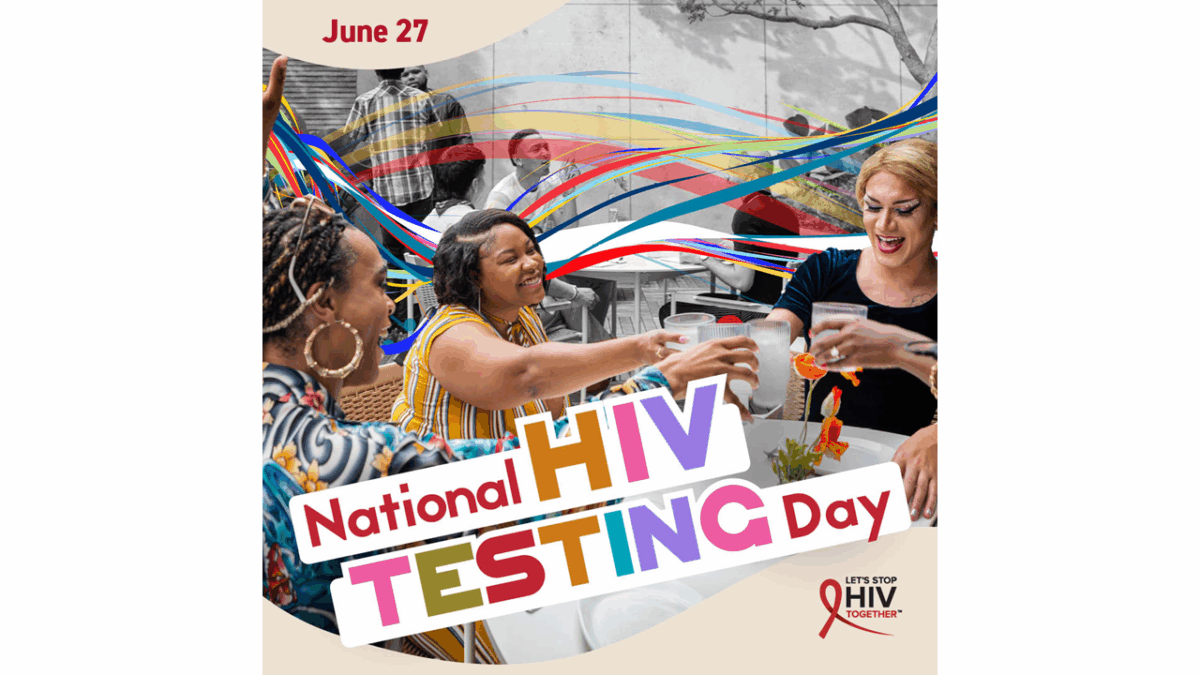The life sciences and healthcare are among the biggest industries globally, and their significance was particularly highlighted during the past couple of years by the COVID-19 pandemic.
Given the hyperfocus on the life sciences thanks to COVID, consumers appear to be more autonomous and vocal about their medical demands and choices. For example, on the pharma and biotech side, there has been growing demand for new drugs and biologics, from new classes of dual-action diabetes and weight loss drugs like Ozempic and Mounjaro to life-saving gene therapies. Similarly, in the medical device space, consumers and patients are on the lookout for the latest health and fitness trackers, and are willing to try new iterations of technologies like neuromodulation.
Social media is also creeping into the life sciences, with drugs like Ozempic going viral on platforms like TikTok as well as some alarming trends like Nyquil chicken. This highlights potentially new social media-based marketing strategies that life science companies may have to start looking into if they aren’t already.
It’s exciting times for the life sciences, as new technologies are enabling ground-breaking discoveries and innovations. Here are four life sciences trends to look out for in 2023.
1. Cell and Gene Therapies
As of December 16, 2022, there are seven US Food and Drug Administration (FDA) approved gene therapies. In 2022 alone, the US regulator approved four new gene therapies, showing the high interest in getting these therapies to market.
In 2023, a number of gene therapies are expected to get the FDA green light. This includes the first ever CRISPR gene editing therapy from Vertex and CRISPR therapeutics for sickle cell disease (SCD) and transfusion-dependent beta thalassemia (TDT). The therapy, exagamglogene autotemcel (exa-cel), was granted a rolling review by the FDA. It has also been granted Regenerative Medicine Advanced Therapy (RMAT), Fast Track, Orphan Drug, and Rare Pediatric Disease designations from the US regulator for both SCD and TDT. Vertex is planning to submit a Biologics License Application (BLA) by the end of the first quarter of 2023 and the company says it is also on track to submit exa-cel to UK and European Union (EU) regulators by the end of the year.
Given their precise targeting, gene therapies have largely been focused on oncology indications followed by rare genetic diseases. As such, most gene therapies in late-stage clinical trials are in oncology or rare disease indications. From 2010 to present, the top three diseases in gene therapy clinical trials were multiple myeloma with 185 trials, diffuse large B-cell lymphoma with 184 studies and metastatic cancers with 181 trials.
In the rare disease space, there has been significant success in diseases like spinal muscular atrophy (SMA), for which Novartis’ gene therapy Zolgensma was approved by the FDA in 2019. Novartis is developing another SMA gene therapy, intrathecal OAV101, which has been demonstrating promising results in clinical trials, including the STEER trial. The trial is evaluating motor function in type 2 SMA patients between the ages of two and 18 and involves about 100 SMA patients.
After dominating the vaccine space for the past two years due to COVID, pharma giant Pfizer may also make waves with its gene therapy portfolio, which it has been working to expand with candidate therapies for hemophilia A, hemophilia B and duchenne muscular dystrophy (DMD). The company is currently evaluating the investigational mini-dystrophin gene therapy, fordadistrogene movaparvovec, in ambulatory DMD patients in the Phase II DAYLIGHT trial. This follows lifting of a clinical hold by the FDA on the Investigational New Drug (IND) application for the therapy, which was placed due to potency concerns.
By 2030, an estimated 60 cell and gene therapies are expected to receive regulatory approval. On the regulatory side, a lot of eyes will be on the FDA’s reauthorization of the Prescription Drug User Fee Act (PDUFA) or PDUFA VII, as it will force the FDA and the FDA’s Center for Biologics Evaluation and Research (CBER) to have the capacity to accommodate the therapies. According to Cell and Gene, PDUFA VII places greater oversight emphasis on cell and gene therapies and will cover the fiscal years 2023 to 2027.
2. Digital Health
Digital technologies are enabling a rapidly changing landscape in healthcare. Digital health is set to revolutionize healthcare in a myriad of ways, from remote patient monitoring to the collection, sharing and analysis of large amounts of data.
The FDA defines digital health to include digital technologies and platforms like mobile health (mHealth), health information technology (IT), wearable devices, telehealth/telemedicine, electronic health records (EHR) and personalized medicine. These digital health technologies rely on computing platforms, connectivity, software and sensors to deliver higher quality health care in terms of improved patient diagnosis, treatment and care.
According to the FDA, digital health technologies can help reduce inefficiencies, reduce costs, increase access, improve quality and make medicine more personalized for patients. In this regard, digital health solutions can help both patients and healthcare providers, leading to the ultimate benefit and goal of better healthcare delivery.
Through wearable, connected technologies and remote monitoring, patients can have greater access and flexibility in their care. Providers can also have more flexible, continuous monitoring options, allowing for more timely decision-making and collection of larger amounts of data.
Digital data solutions in healthcare offer a more powerful way of collecting, storing, sharing and analyzing data. With an unprecedented explosion in the amount of data that is being generated thanks to digital technologies, robust digital data solutions are imperative in extracting insights from the data to inform better care and research and development.
3. Manufacturing & Supply Chain: Addressing Drug Shortages
While the pandemic is to blame for the supply chain issues in many global industries, unprecedented demand for drugs and medical devices has exacerbated the situation in pharma and healthcare.
An example is the recent shortage of Novo Nordisk’s GLP-1 agonist semaglutide — marketed as Wegovy for weight loss and as Ozempic for the lower dose diabetes version. This new class of diabetes medication, with weight loss as a side effect, has taken off far quicker than expected due to high consumer demand. Eli Lilly’s dual GIP/GLP-1 agonist Mounjaro was approved by the FDA in May and has already exceeded initial sales expectations by over two-fold. The demand for drugs like Ozempic was further accelerated thanks or no thanks to viral videos of it on TikTok, resulting in a shortage that Novo is scrambling to address. While this could give Lilly’s Mounjaro an edge, there are concerns that Lilly may also face challenges in meeting demand.
Recent shortages in children’s medications like children’s Tylenol has been especially alarming amid a particularly rough cold and flu season this year due to multiple respiratory viruses in circulation, including influenza, respiratory syncytial virus (RSV) and COVID-19. Antibiotics like amoxicillin and ADHD medication Adderall are also experiencing scarcities. It’s being reported that liquid versions of some antibiotics are also in short supply, which again, will impact children the greatest.
Experts say the drug shortages have been building for the past couple of years now, exposing issues in drug manufacturing and supply chain. And each drug shortage often has a unique reason. A lack of financial incentives to produce them, manufacturing disruptions, labor issues and shortages in raw materials/ingredients are some of the reasons behind why a company may not be able to produce enough of a drug.
While the US produces most of the world’s drugs, it is heavily reliant on raw materials from just two countries, China and India, according to a CNN report. This interdependency creates challenges when a given material cannot be delivered due to being in short supply or due to transportation issues.
Manufacturing and supply chains in the pharma and medical device industries will continue to be an important issue in 2023 as companies attempt to find solutions to ramp up production. This includes companies investing in expanding existing manufacturing facilities and building new ones. It also means companies partnering with each other to help with shortfalls. With inflation and a predicted economic recession in 2023, it will be more important than ever for businesses in the life sciences to band together in producing and delivering life-saving medications.
4. Social Media Marketing
Given the growing trend of social media marketing in many industries, pharma companies may also look to creating or bolstering their TikTok and Instagram accounts to market their goods. The past year demonstrated the power of social media platforms like TikTok where drugs like Ozempic went viral after influencers and celebrities revealed it as their new secret for weight loss. While traditional TV marketing and poster ads in doctor’s offices will likely not become completely obsolete, social media marketing will serve as an added tool in companies’ marketing arsenal.
Social media marketing strategies differ from more conventional forms of marketing. You can build content in various ways, from short video pieces to brochure-like infograms and leverage the pull of social media celebrities i.e., influencers. The key to social media success is to have short, targeted messaging that is timely.
The demographics of social media platforms can also vary. For example, the age ranges and career backgrounds of people on Twitter may be different from those on TikTok, although the latter seems to be attracting people of all ages now.
Regulatory agencies like the FDA and research centers like Johns Hopkins University have been increasingly using their social media platforms over the past few years, especially during COVID-19.
The outlook for life sciences industries in 2023 is that of change, growth and continued evolution. While there are a number of challenges ahead in manufacturing and supply chains, innovations in digital health and research and development will be a driving force in the advancement of new treatments and solutions.












Join or login to leave a comment
JOIN LOGIN